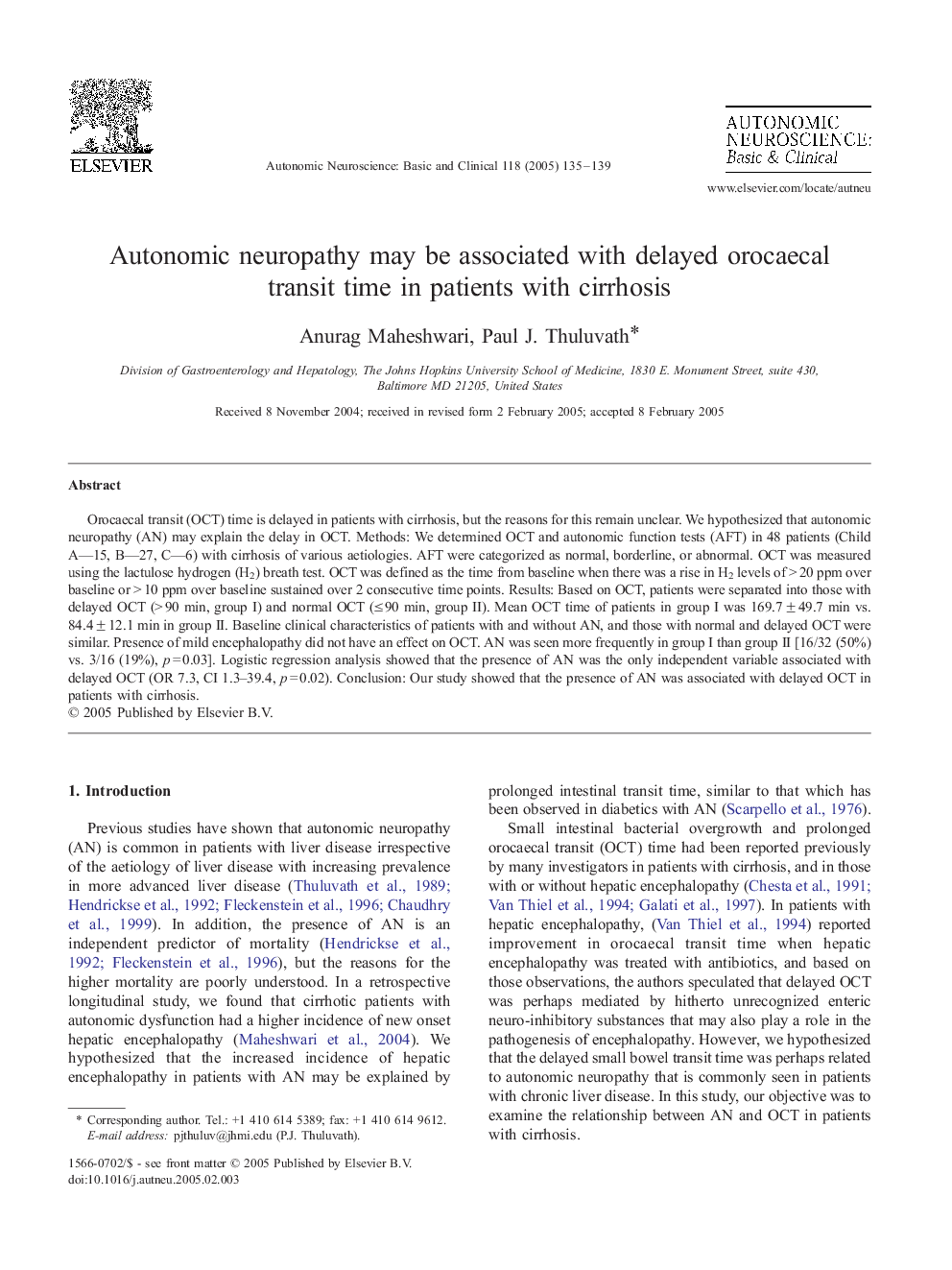| Article ID | Journal | Published Year | Pages | File Type |
|---|---|---|---|---|
| 9186592 | Autonomic Neuroscience | 2005 | 5 Pages |
Abstract
Orocaecal transit (OCT) time is delayed in patients with cirrhosis, but the reasons for this remain unclear. We hypothesized that autonomic neuropathy (AN) may explain the delay in OCT. Methods: We determined OCT and autonomic function tests (AFT) in 48 patients (Child A-15, B-27, C-6) with cirrhosis of various aetiologies. AFT were categorized as normal, borderline, or abnormal. OCT was measured using the lactulose hydrogen (H2) breath test. OCT was defined as the time from baseline when there was a rise in H2 levels of > 20 ppm over baseline or > 10 ppm over baseline sustained over 2 consecutive time points. Results: Based on OCT, patients were separated into those with delayed OCT (> 90 min, group I) and normal OCT (â¤Â 90 min, group II). Mean OCT time of patients in group I was 169.7 ± 49.7 min vs. 84.4 ± 12.1 min in group II. Baseline clinical characteristics of patients with and without AN, and those with normal and delayed OCT were similar. Presence of mild encephalopathy did not have an effect on OCT. AN was seen more frequently in group I than group II [16/32 (50%) vs. 3/16 (19%), p = 0.03]. Logistic regression analysis showed that the presence of AN was the only independent variable associated with delayed OCT (OR 7.3, CI 1.3-39.4, p = 0.02). Conclusion: Our study showed that the presence of AN was associated with delayed OCT in patients with cirrhosis.
Related Topics
Life Sciences
Neuroscience
Cellular and Molecular Neuroscience
Authors
Anurag Maheshwari, Paul J. Thuluvath,
